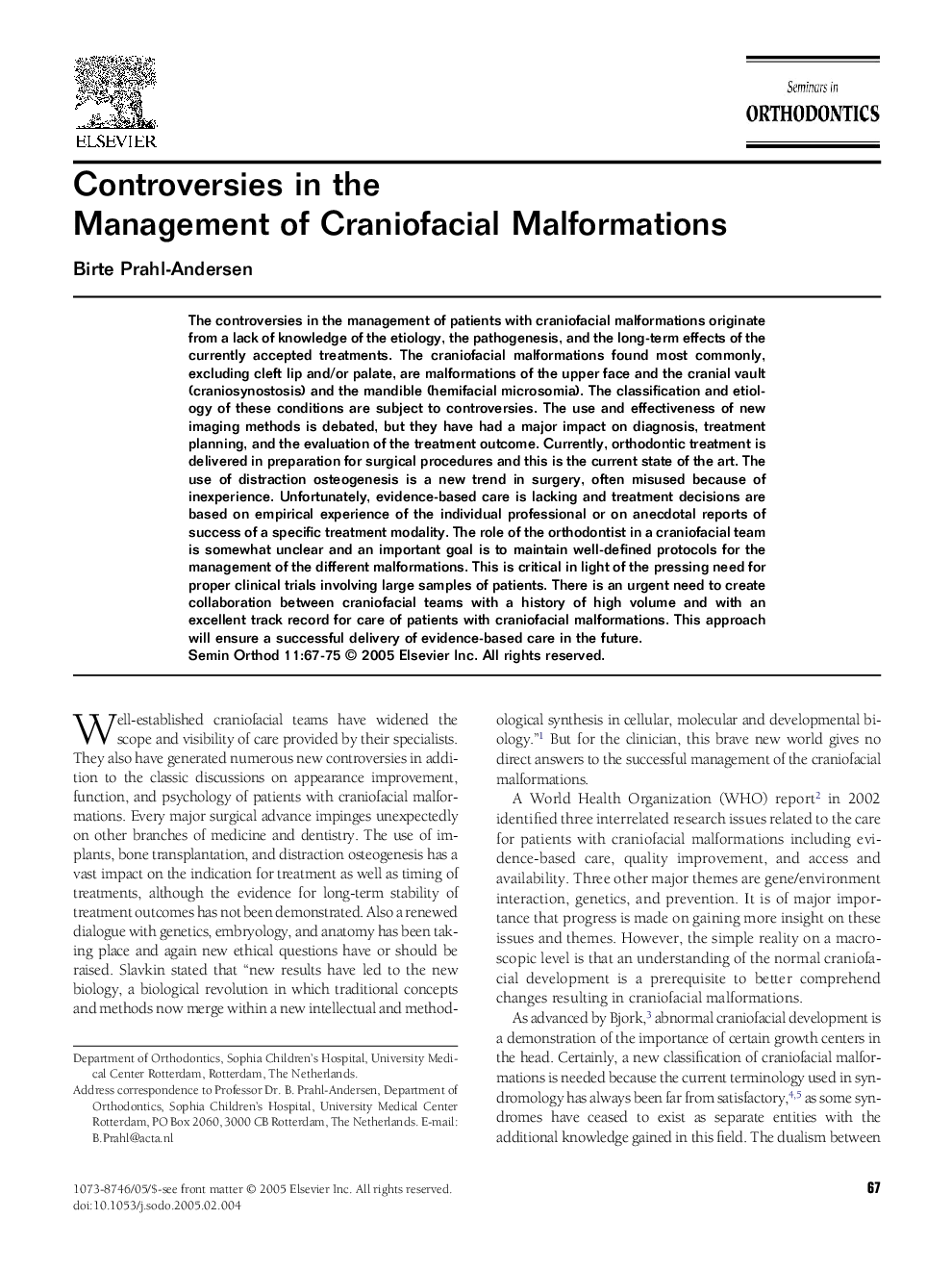| Article ID | Journal | Published Year | Pages | File Type |
|---|---|---|---|---|
| 9220371 | Seminars in Orthodontics | 2005 | 9 Pages |
Abstract
The controversies in the management of patients with craniofacial malformations originate from a lack of knowledge of the etiology, the pathogenesis, and the long-term effects of the currently accepted treatments. The craniofacial malformations found most commonly, excluding cleft lip and/or palate, are malformations of the upper face and the cranial vault (craniosynostosis) and the mandible (hemifacial microsomia). The classification and etiology of these conditions are subject to controversies. The use and effectiveness of new imaging methods is debated, but they have had a major impact on diagnosis, treatment planning, and the evaluation of the treatment outcome. Currently, orthodontic treatment is delivered in preparation for surgical procedures and this is the current state of the art. The use of distraction osteogenesis is a new trend in surgery, often misused because of inexperience. Unfortunately, evidence-based care is lacking and treatment decisions are based on empirical experience of the individual professional or on anecdotal reports of success of a specific treatment modality. The role of the orthodontist in a craniofacial team is somewhat unclear and an important goal is to maintain well-defined protocols for the management of the different malformations. This is critical in light of the pressing need for proper clinical trials involving large samples of patients. There is an urgent need to create collaboration between craniofacial teams with a history of high volume and with an excellent track record for care of patients with craniofacial malformations. This approach will ensure a successful delivery of evidence-based care in the future.
Related Topics
Health Sciences
Medicine and Dentistry
Dentistry, Oral Surgery and Medicine
Authors
Birte Prahl-Andersen,
